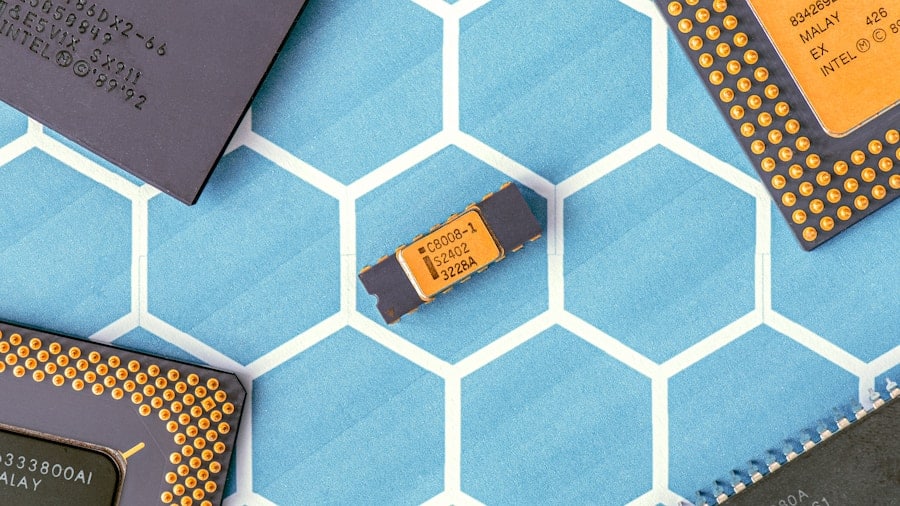Graphene, a single layer of carbon atoms arranged in a two-dimensional honeycomb lattice, has emerged as one of the most revolutionary materials in modern science and technology. Discovered in 2004 by physicists Andre Geim and Konstantin Novoselov at the University of Manchester, this remarkable substance has garnered significant attention due to its extraordinary properties and potential applications across various fields. The isolation of graphene was a pivotal moment in materials science, as it opened the door to a new realm of research focused on two-dimensional materials.
Graphene is not only the thinnest material known to man but also one of the strongest, with a tensile strength over 100 times that of steel. The excitement surrounding graphene stems from its unique combination of electrical, thermal, and mechanical properties. It exhibits exceptional electrical conductivity, making it an ideal candidate for a wide range of electronic applications.
Additionally, its high thermal conductivity allows for efficient heat dissipation, which is crucial in electronic devices that generate heat during operation. As researchers continue to explore the potential of graphene, its applications are becoming increasingly diverse, particularly in the realm of electronics, where it promises to revolutionize the way we design and manufacture devices.
Key Takeaways
- Graphene is a single layer of carbon atoms arranged in a hexagonal lattice, known for its exceptional strength and conductivity.
- Graphene’s unique properties include high electrical and thermal conductivity, flexibility, and transparency, making it an ideal material for various applications.
- Graphene has the potential to revolutionize the electronics industry by enabling faster and lighter electronic devices.
- The use of graphene in electronics can lead to faster data transfer, higher processing speeds, and more efficient energy storage.
- Graphene’s applications in electronics include flexible displays, ultra-fast transistors, and high-capacity batteries, with potential for even more innovative uses in the future.
Graphene’s Unique Properties
Superior Electrical Conductivity
Graphene’s electrical conductivity surpasses that of traditional conductors like copper or silver. This exceptional property is not only beneficial for electronic components but also opens up possibilities for developing new types of transistors and other devices that require efficient charge transport.
Unparalleled Mechanical Strength
In addition to its electrical properties, graphene boasts remarkable mechanical strength. It is incredibly resilient, with a tensile strength of approximately 130 gigapascals, making it one of the strongest materials known. This strength is coupled with flexibility; graphene can be bent and stretched without breaking, which is particularly advantageous for applications in flexible electronics.
Thermal Conductivity and Industry Impact
Furthermore, graphene’s thermal conductivity is another standout feature. It can dissipate heat more effectively than copper, which is vital for maintaining performance and longevity in electronic devices that generate heat during operation. These unique properties position graphene as a transformative material in the electronics industry.
Graphene in Electronics

The integration of graphene into electronic devices has the potential to redefine the landscape of technology. Its high electrical conductivity allows for faster and more efficient electronic components, while its mechanical properties enable the development of flexible and lightweight devices. Researchers are exploring various ways to incorporate graphene into existing technologies, such as transistors, sensors, and batteries.
For instance, graphene field-effect transistors (GFETs) are being developed to replace traditional silicon-based transistors, offering improved performance and reduced power consumption. Moreover, graphene’s ability to function as a transparent conductor makes it an attractive alternative to indium tin oxide (ITO), which is commonly used in touchscreens and displays. The transparency and conductivity of graphene allow for the creation of lightweight and flexible displays that can be integrated into a variety of surfaces.
This capability could lead to innovations in wearable technology and smart textiles, where electronic components are seamlessly integrated into clothing or accessories. As research progresses, the potential applications of graphene in electronics continue to expand, promising a future where devices are not only more efficient but also more versatile.
Faster Electronics with Graphene
One of the most compelling advantages of using graphene in electronics is its ability to facilitate faster processing speeds. The high electron mobility in graphene allows for rapid switching times in transistors, which is crucial for enhancing the performance of electronic devices. Traditional silicon-based transistors face limitations due to their inherent material properties, which can hinder speed and efficiency as devices become smaller and more complex.
In contrast, graphene’s unique structure enables it to operate at higher frequencies, making it suitable for high-speed applications such as radio frequency (RF) communication and advanced computing. For example, researchers have demonstrated that graphene-based transistors can achieve switching speeds exceeding 100 gigahertz, significantly outperforming their silicon counterparts. This capability opens up new possibilities for developing ultra-fast processors that can handle complex computations at unprecedented speeds.
Additionally, the integration of graphene into existing semiconductor technologies could lead to hybrid devices that combine the best features of both materials, resulting in enhanced performance across a wide range of applications. As the demand for faster electronics continues to grow, graphene stands out as a key player in meeting these challenges.
Lighter Electronics with Graphene
The lightweight nature of graphene presents significant advantages for the design and manufacturing of electronic devices. Traditional materials used in electronics often add considerable weight to devices, which can be a limiting factor in applications such as portable electronics and electric vehicles. Graphene’s low density allows for the creation of lighter components without sacrificing performance or durability.
This characteristic is particularly beneficial in industries where weight reduction is critical, such as aerospace and automotive engineering. Incorporating graphene into batteries and energy storage systems can also lead to lighter solutions with improved energy density. For instance, researchers are exploring the use of graphene in lithium-ion batteries to enhance their capacity and reduce weight.
By utilizing graphene-based anodes or cathodes, it is possible to create batteries that not only weigh less but also charge faster and have longer lifespans compared to conventional batteries. This advancement could revolutionize portable electronics by enabling longer usage times without increasing device weight. As manufacturers seek to create sleeker and more efficient products, graphene’s lightweight properties will play a pivotal role in shaping the future of electronics.
Applications of Graphene in Electronics

Enhancing Consumer Electronics
In consumer electronics, graphene is being explored for use in flexible displays that can bend without breaking, paving the way for innovative designs in smartphones and tablets. Additionally, its application in touchscreens could lead to more responsive interfaces that enhance user experience.
Advancements in Telecommunications
Beyond consumer products, graphene’s unique properties make it suitable for use in sensors that require high sensitivity and rapid response times. In the field of telecommunications, graphene’s ability to operate at high frequencies positions it as a promising candidate for next-generation communication technologies such as 5G networks. The development of graphene-based RF components could lead to faster data transmission rates and improved connectivity.
Towards Sustainable Energy Solutions
Furthermore, researchers are investigating the use of graphene in energy harvesting devices, such as solar cells and thermoelectric generators. By integrating graphene into these systems, it may be possible to enhance efficiency and reduce costs while promoting sustainable energy solutions.
Challenges and Future Developments
Despite its remarkable properties and potential applications, the commercialization of graphene faces several challenges that must be addressed before it can be widely adopted in electronics. One significant hurdle is the scalability of production methods for high-quality graphene sheets. While techniques such as chemical vapor deposition (CVD) have been developed to produce large-area graphene films, these methods can be costly and time-consuming.
Researchers are actively exploring alternative production techniques that could lower costs while maintaining quality. Another challenge lies in integrating graphene with existing semiconductor technologies. The compatibility of graphene with traditional materials used in electronics must be thoroughly investigated to ensure seamless integration into current manufacturing processes.
Additionally, regulatory hurdles related to safety and environmental impact must be considered as graphene-based products move toward commercialization. As research continues to advance our understanding of this material, collaborative efforts between academia and industry will be essential in overcoming these challenges and unlocking the full potential of graphene in electronics.
The Future of Graphene in Electronics
The future of graphene in electronics appears promising as researchers continue to uncover new applications and refine production techniques. With its unique combination of electrical conductivity, mechanical strength, and lightweight properties, graphene has the potential to revolutionize various aspects of electronic design and manufacturing. As industries seek faster, lighter, and more efficient solutions, the integration of graphene into existing technologies will likely play a crucial role in shaping the next generation of electronic devices.
As we look ahead, ongoing research will be vital in addressing the challenges associated with scaling production and ensuring compatibility with current technologies.
With continued investment and exploration into this remarkable material, we may soon witness a new era in electronics characterized by unprecedented performance and versatility driven by graphene technology.
To learn more about the best laptops for copywriters, you can check out the article here.
FAQs
What is graphene?
Graphene is a single layer of carbon atoms arranged in a two-dimensional honeycomb lattice. It is the basic building block of other carbon-based materials like graphite, carbon nanotubes, and fullerenes.
How is graphene enabling faster electronics?
Graphene’s unique properties, such as high electrical conductivity and electron mobility, make it an ideal material for faster electronics. It allows for faster electron movement, leading to quicker data processing and transmission in electronic devices.
How is graphene enabling lighter electronics?
Graphene is an incredibly lightweight and thin material, making it ideal for reducing the weight and size of electronic devices. Its strength and flexibility also allow for the creation of thinner and more durable electronic components.
What are some potential applications of graphene in electronics?
Graphene has the potential to revolutionize electronics by enabling faster and lighter devices. It can be used in applications such as flexible displays, high-speed transistors, ultra-fast charging batteries, and efficient solar cells.
Are there any challenges in using graphene in electronics?
One of the main challenges in using graphene in electronics is the large-scale production of high-quality graphene at a low cost. Additionally, integrating graphene into existing manufacturing processes and ensuring its compatibility with other materials can be a challenge.

